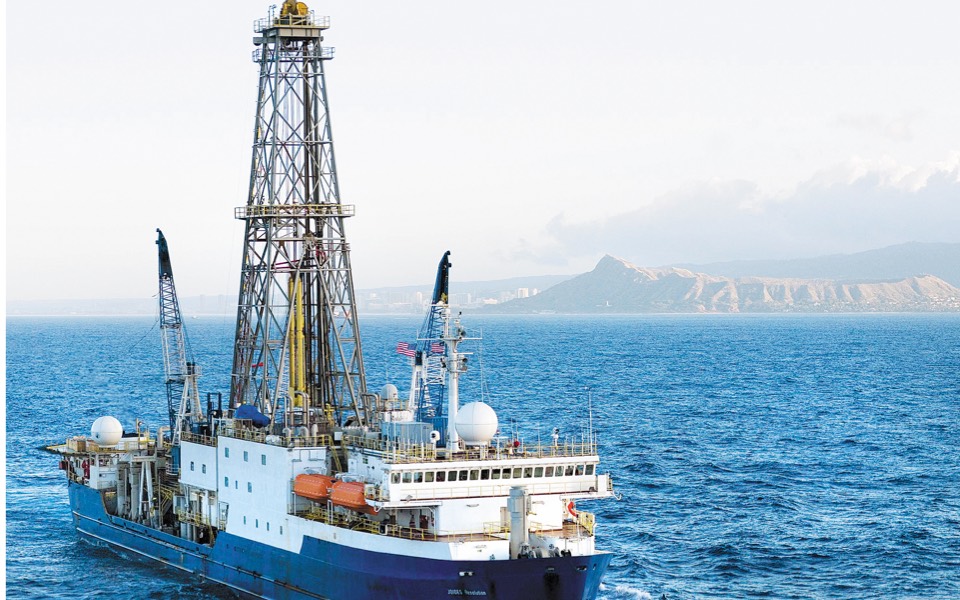
Kathimerini Greece Newsroom
Scientists seeking to shed light on the geological history of the southern Aegean by analyzing the traces left by volcanic activity in the area over the millennia are spearheading an international oceanographic mission that will carry out exploratory undersea
The mission on the JOIDES Resolution research vessel (the acronym is short for Joint Oceanographic Institutions for Deep Earth Sampling) is part of the International Ocean Discovery Program (IODP), which, having been studying our oceans for the past 50 years, is one of the biggest programs of its kind in the world. The IODP comprises 22 member-states and receives funding from the United States, Japan, China, Australia, Korea, India, Canada and 14 European countries. Its objective is to study the Earth’s evolution by examining sediment and rocks from core samples taken from beneath the seafloor by drilling to great depths.
The Hellenic Arc Volcanic Field mission was announced in August by the European Consortium for Ocean Research Drilling (ECORD), which said that the mission “provides a unique opportunity to address how subduction-related volcanism impacts life.” The field comprises the volcanic islets of Christina and Nea and Palia Kammeni, the underwater Kolumbo volcano that last erupted in 1650, and the caldera created by an eruption in the late Bronze Age, which makes this expedition also fascinating from an archaeological perspective, as experts believe the latter had a devastating impact on Minoan Crete.
The aim is to get a better understanding of what leads to volcanic activity in an area that is visited by more than 2 million tourists a year so that we can be more effective in predicting eruptions

Volcanic activity on the Greek island has been extensively studied by international scientists in recent decades, but its surrounding sea environment has not been as thoroughly investigated. “The picture we get from the land is relatively small, as the evidence becomes eroded with the passage of time and we only get to see a tiny part in terms of years,” Texas A&M University professor Katerina Petronotis, the IODP project’s expedition manager and staff scientist, tells Kathimerini. “Undersea core drilling will allow us to see much further back in time.”
The mission team comprises some 30 scientists, 25 technical staff and 65 crew members, and will be headed by volcanologist Timothy Druitt and Steffen Kutterolf, and Nomikou.
The core samples will be extracted from an existing network of seismic drilling so as to avoid possible contact with pockets of natural gas, oil or magma.
“The aim is to get a better understanding of what leads to volcanic activity in an area that is visited by more than 2 million tourists a year so that we can be more effective in predicting eruptions and their future consequences,” adds Petronotis.
































